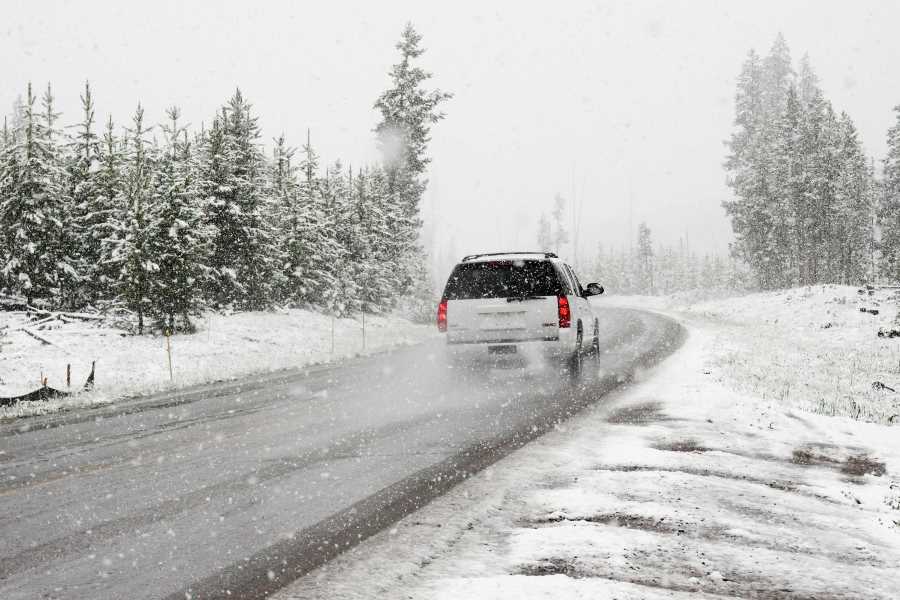
Moving in Ontario: Tips for Dealing with Snow and Ice
Key Takeaways
- Research shows that checking Ontario’s weather forecast ahead of a move, especially in winter, is essential for safety.
- Evidence suggests clearing pathways and driving cautiously during snowy conditions to avoid slips or accidents.
- It’s clear that wearing warm clothing and using waterproof packing materials can safeguard both belongings and personal well-being.
Planning and Preparation
Before moving, keeping an eye on the weather is a must, particularly during Ontario’s harsh winter months. Check Environment Canada for the latest updates. If a big snowstorm is on the horizon, think about rescheduling to stay safe. Hiring professionals experienced with winter moves can make a difference—they’re often better equipped to deal with snow and ice. Also, clear snow and ice from around your home beforehand, using salt or sand to keep walkways safe.
Packing Tips
Protect your stuff with waterproof and insulated packing materials, especially in cold weather. Label boxes clearly so you know what’s inside and where it goes. Electronics need extra care—let them warm up to room temperature before plugging them in at your new place, and back up your data just in case. Check manufacturer guidelines for temperature limits to keep sensitive items safe.
Safety During the Move
Dress in layers, wear gloves, and put on boots with good traction to stay warm and avoid slipping. If you’re driving, take it slow and make sure the moving truck has snow-ready tires. Keep an emergency kit with food, water, and blankets in the truck in case things go sideways.
Full Guide
Moving is a big deal, and in Ontario’s winter, snow, ice, and freezing temps can make it even trickier. This guide offers practical advice to help you move safely and smoothly in snowy weather, covering everything from planning to settling into your new home.
Introduction
Ontario’s winter typically stretches from November to March, bringing heavy snow and icy conditions. During a move, these factors can mean slippery roads, blocked paths, and risks to your belongings. Proper planning is key to keeping everything—and everyone—safe and sound.
Planning and Preparation
Start by checking the weather. Head to Environment Canada for detailed forecasts for Ontario, especially for your moving day. If a storm or bitter cold is coming, consider pushing the date back. Studies show that pros who know how to handle winter moves can save you a lot of hassle—they’re used to navigating snow and ice.
Before the big day, clear snow and ice from your property. Sprinkle salt or sand on paths, driveways, and stairs to stop slips. The Ontario Ministry of Transportation emphasizes road safety in winter—make sure your moving truck’s tires are up to the challenge.
Packing Tips
Packing smart is critical in cold weather. Use waterproof and insulated materials like plastic bins or thick cardboard to shield your belongings from moisture and low temps. Label every box with its contents and destination room for easy unpacking later.
Electronics and fragile items deserve extra attention. Cold can cause condensation inside gadgets, potentially damaging them. Let them sit at room temp for about 24 hours before use, and back up your data as a precaution. Peek at manufacturer manuals for temperature do’s and don’ts—some devices, like phones, struggle below freezing.
Safety During the Move
Your safety comes first. Layer up with warm clothes, including a waterproof jacket, gloves, and boots that grip well on snow. Better Homes & Gardens suggests keeping extra blankets handy in case the cold creeps in during the move.
If you’re behind the wheel, drive slow and steady, leaving plenty of space between you and other vehicles. Ensure the truck has winter tires. The Spruce recommends stashing an emergency kit—think food, water, and blankets—in the cab for unexpected delays or trouble.
Moving with Pets
Got pets? Winter moves call for extra care. Keep them warm and dry, and consider asking a friend to watch them on moving day to avoid stress or mishaps. Pack their food, water, and toys to keep them comfy.
Setting Up Your New Place
Before moving in, make sure the new house’s heating works. Check for drafts or insulation gaps, and add weather stripping if needed. Protect pipes from freezing, especially in colder spots. Kiplinger advises keeping salt or ice melt on hand to clear paths.
Post-Move Check
Once you’re in, inspect your stuff for weather-related damage—think dampness or cold-induced cracks. Unpack slowly, get the place cozy, and settle into your fresh start.
Table: Winter Moving Checklist
Here’s a handy checklist to keep your winter move on track:
| Category | Task | Notes |
| Weather Forecast | Check the day of and days before | Use Environment Canada |
| Pros | Hire movers with winter know-how | Look for snow-handling skills |
| Path Clearing | Shovel snow, spread salt or sand | Avoid slips |
| Packing Materials | Use waterproof, insulated options | Protect electronics, fragile items |
| Personal Safety | Wear layers, grippy boots | Pack extra blankets |
| Driving | Go slow, check tires | Keep emergency supplies ready |
| Pet Care | Keep pets warm, pack their essentials | Consider a sitter for the day |
| New Home Prep | Test heat, insulate pipes | Stock up on ice melt |
With these tips, you’ll tackle an Ontario winter move like a champ and kick off your new chapter with ease.

